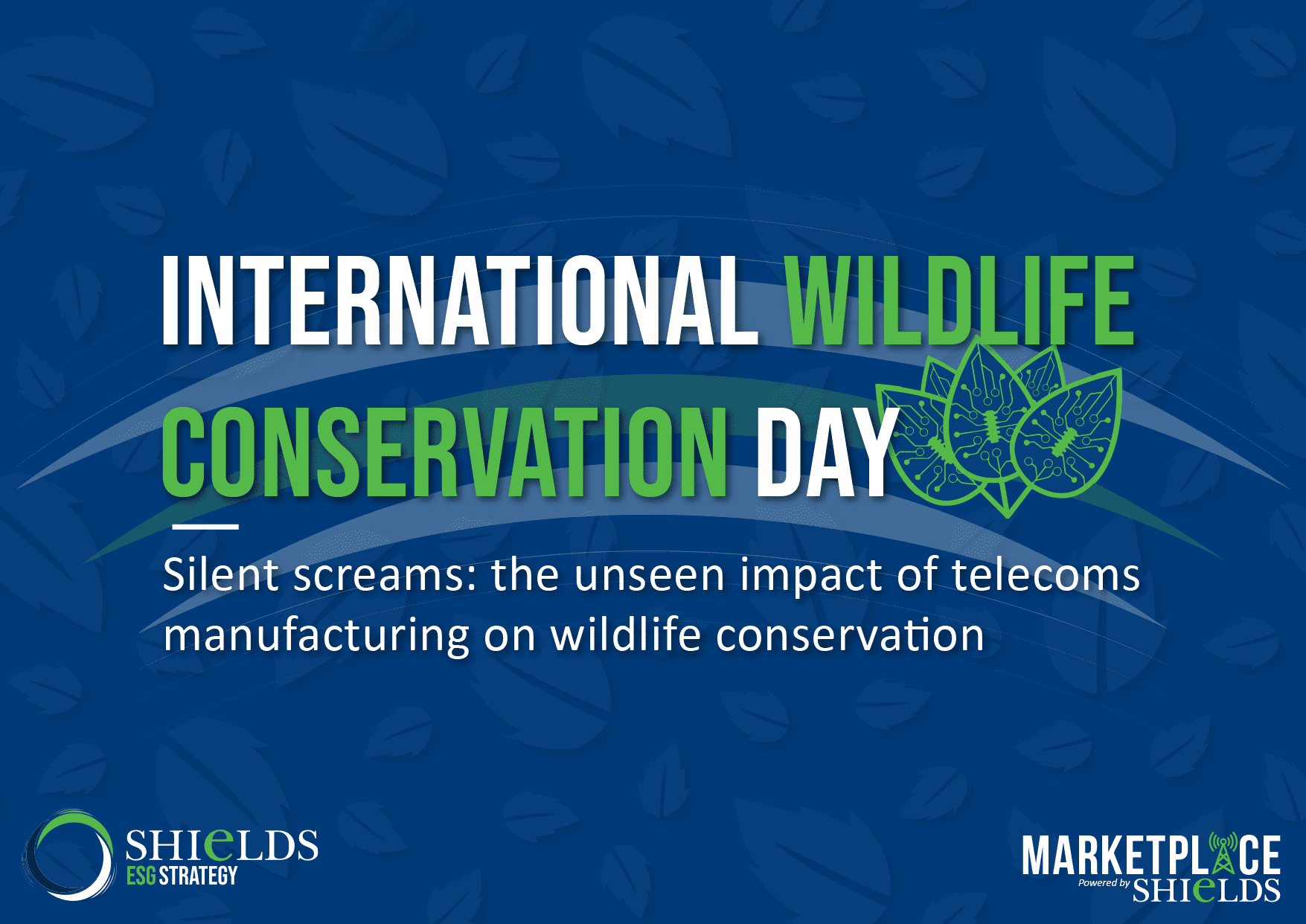On International Wildlife Conservation Day, we take a look at the hard truth about telecoms manufacturing and its impact on the planet – and show you how your network can keep doing everything it needs to, without contributing to the problem.
In the pursuit of progress, we often overlook the hidden costs.
On World Wildlife Conservation Day, our focus turns to an issue seldom discussed — the impact of telecoms manufacturing on wildlife conservation, which can look like this:

But what’s a dying orca got to do with sourcing telecoms equipment?
Here’s the big problem: polychlorinated biphenyls – a group of synthetic organic chemicals that were widely used for five decades from the 1920s, for everything from microscope oils to your grandma’s vintage fridge.
Prized for their chemical stability, electrical insulating properties and resistance to heat, PCBs were popular in all sorts of industrial manufacturing, telecoms equipment included.
Weren’t PCBs banned decades ago?
PCBs were finally banned in 1979 after they were found to be harmful to human and environmental health – but it was too little too late.
During those 50+ years of circulation, it’s estimated that around 1.5 billion pounds – or 680,388,555kg – of PCBs were unleashed into the Earth’s air, water and soil during manufacturing and use.
By that time, researchers had detected traces of PCBs inside animals and humans all around the world, everywhere from the New York City subway to the remotest corners of the Arctic, with the potential to:
- Induce cancer
- Weaken the immune system
- Interfere with hormonal signaling
- Hinder reproductive processes
Though efforts have been made to clean up contaminated sites, and despite being nearly half a century on from the ban, the catastrophic impact of PCBs is still very much being felt.
How much harm are PCBs really doing now? The impact on the world’s killer whale population…
For many years, these chemicals seeped into the oceans. Plankton absorbed them, followed by fish that consumed the plankton, and then marine mammals that preyed on the fish. As they moved up the food chain, these substances accumulated in higher concentrations.
And at the apex of this chain, killer whales now boast the highest recorded levels of PCBs among all animals, with scientists predicting they’ll cause the collapse of 10 out of the 19 orca pods they studied within the next century. That’s more than half.
Why are PCBs still a problem for telecoms networks?
The impact of the telecoms manufacturing industry on the release of PCBs into the environment has been significant, particularly in the past when these chemicals were widely used in electronic equipment.
Today, mining for new manufacturing continues to pose additional risks too. Despite the ban, PCBs are still authorised for use as dielectric fluids in some electrical equipment, which are heavily used in mining, and for servicing industries with huge electrical power distribution and consumption, like telecoms.
It’s no coincidence that Shields began in 1979, the same year that PCBs were banned in new manufacturing. Concerned about the environmental impact of waste and disposal of telecoms equipment, the ban prompted our founder Gordon Shields to take action.
Shields revolutionized the handling of end-of-life telecom equipment, preventing PCBs from seeping into the environment through safe recycling; dismantling and repurposing components, and recovering the monetary worth of the precious metals contained in legacy equipment on behalf of networks.
How can telecoms networks avoid the PCB problem?
These days our systems have come on a long way, and we now facilitate automatic decision scanning on any assets that come to Shields from telecoms equipment recoveries or recycle programs. Each asset is scanned so we can see whether it should be:
- Rigorously tested and kept for resale to other networks
- Tested and redeployed within the same network
- Safely recycled with the network recouping the value of the precious metals
Reselling and reusing telecom equipment – rather than manufacturing new components – not only lessens the demand for fresh components but also contributes to the prevention of PCBs ending up in landfills and seeping into the water table during mining.
Meanwhile, recycling takes end-of-life equipment back down to commodity level, where it can be repurposed or destroyed environmentally correctly, in line with our zero landfill targets, and avoiding the risk of any more PCBs seeping into the environment.
Both avenues are made possible through MarketPlace, the world’s largest inventory and centralized platform of quality, used telecoms equipment.
How can your network contribute to the circular economy, reduce PCB risk, and still get the equipment it needs?
The circular economy is gaining traction as networks recognize the need to minimize their ecological impact – but true environmental responsibility goes beyond mitigation. Going above and beyond to reduce the risk of further PCB-related consequences means rethinking equipment procurement and waste handling altogether.
If you would like to know more about how MarketPlace can create new revenue streams and reduce capex for your network through safe reuse and recycling, book a demo on the button below – and join our plight to minimize the impact of PCBs and clean up the telecoms industry at the same time.


